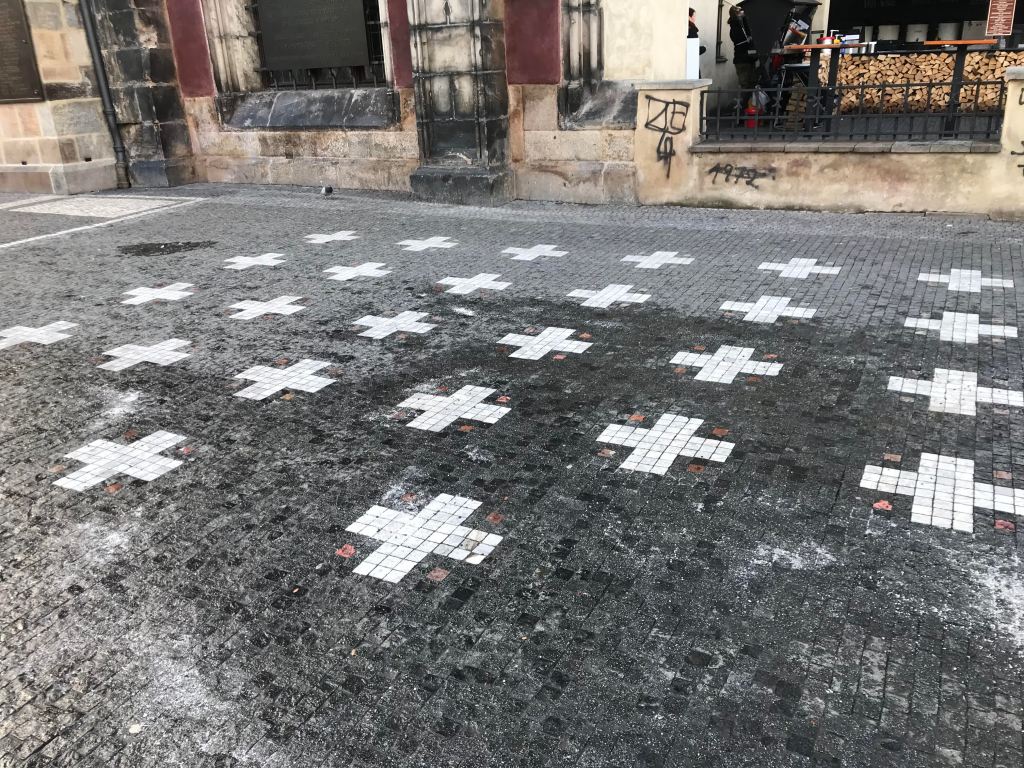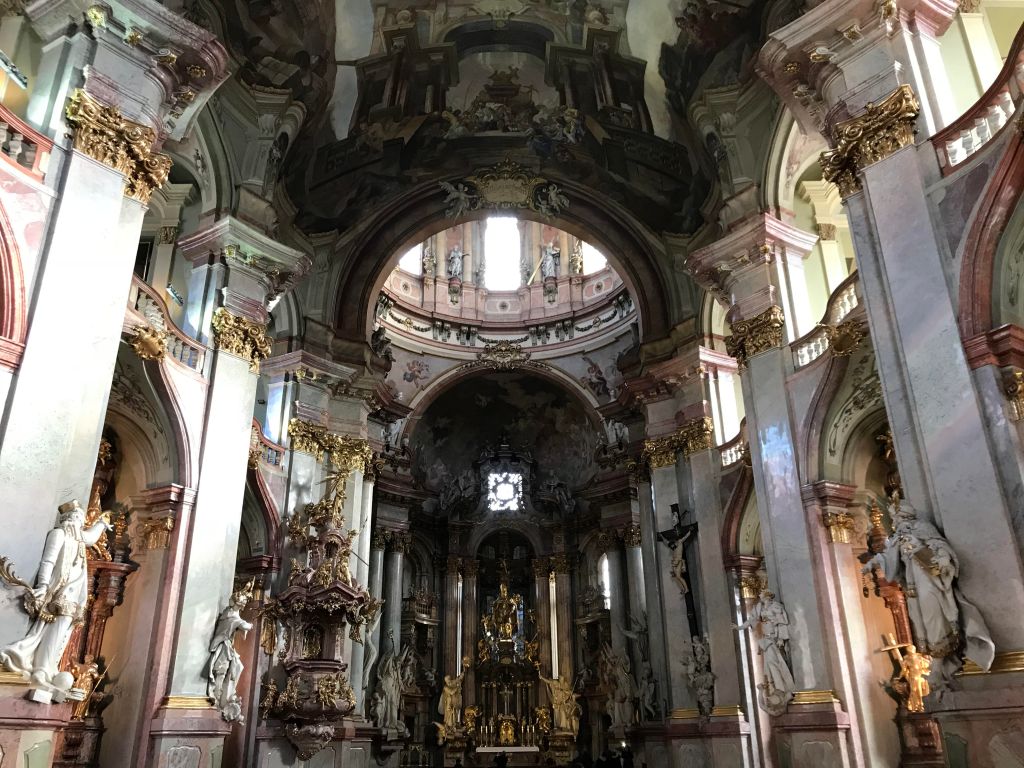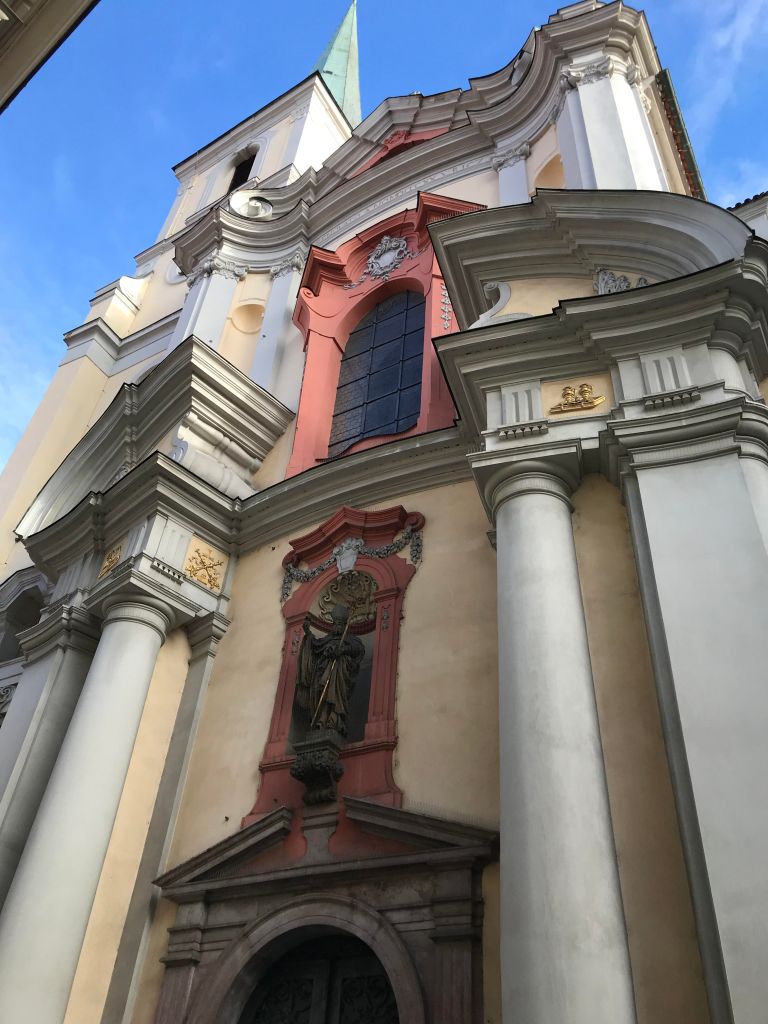Today marks a new chapter in our journey through Prague: a true introduction to Habsburg era (1525-Present). We are now leaving behind the era of the Hussites and entering the next generation of Czech history. The Habsburgs were an Austrian/German noble family who arrived and took over Bohemia in 1525. Their entrance marked an end to the Protestant efforts of the Hussites in the 15th century. The Habsburg rulers were aligned with or declared Holy Roman Emperors due to their influence in Europe during this time. The Habsburgs reverted Bohemia back to its Catholic roots and declared Protestantism mostly outlawed (the only known exception being Rudolf II, a Habsburg leader who advocated for religious freedom).

Execution spots 
Execution Year (1621) 
Site of the Marian Column
Our journey began by walking through the city looking for evidence of the Habsburgs assertion of power or the people’s rebellion against them. This started, as usual, in the Old Town Square. In front of the Old Town Tower with the Astronomical Clock, are markings on the ground. These markings were a label to mark the execution spot of Protestants who rebelled from 1618-1620 and lost in the Battle of White Mountain. These markings on the ground show where the Protestants we beheaded or burned for their crimes against the Habsburgs. They were executed as an example to discourage further rebellion. Another location in the Old Town Square with signs of Habsburg rule is mark in the center of the square that shows where the Marian Column once stood. The Marian Column was erected by the Habsburgs after the Thirty Years War (1618-1648) as a show of dominance. The column was a piece of Baroque architecture focusing on the Catholic beliefs the Habsburgs had. The column was destroyed by the Czech in 1918 following the end of World War I, the fall of the Habsburgs, and the establishment of Czechoslovakia. The area where the column once stood is marked on the ground.
Our journey continued across the Charles Bridge in Mala Strana. Mala Strana is an area on the opposite side of the Charles Bridge and is also the location of the Prague Castle we visited last week. While in Mala Strana, we visited multiple locations that are associated with the Habsburgs takeover of Bohemia.

St. Nicholas Church exterior 
The legend may be true (note than man in black spying) 
St. Nicholas Church interior
Our first stop was visiting the St. Nicholas Church and no this is not the same one from the Day 1 of the course. The St. Nicholas Church in Mala Strana is a massive Baroque, formerly Gothic, church built in the 13th century, but redesigned in the 17th when it was given to the Jesuits. The architecture of this church is extraordinary. From the extensive use of golden altars, statues, paintings (especially the ceiling), this building cannot be described by words alone. Personally, I find this location to be a bit much for a church, but I guess that was the style of times. There is a legend that goes with this church. It states that when the Church was being redone and the ceiling was being painted, the artist demanded that no one viewed the work while it was unfinished. Then when one of the Jesuits snuck in to have a peek at the work, the artist decided to paint him on the ceiling in a design that made it seem as though he was spying (WHICH HE WAS). We even found what looked like the area of the ceiling in question.

St. Thomas Church exterior 
A “holy relic?” 
St. Thomas Church interior
Next we traveled two streets over to St. Thomas’ Church, which was tucked away behind a few buildings and was hard to find. This location was also a Gothic church turned Baroque by the Habsburgs. This church was special in terms of our journey because of it contained “holy relics.” The quotation marks are used because the relics in question were the remains of saints that were not canonized by the Catholic Church, so they are not technically considered saints. This place is also special to our journey because if you go into a hallway behind the altar, you can still see evidence of the old Gothic style of architecture.

Church of Our Lady Victorious exterior 
“Infant Jesus of Prague”
Our final stop on our church tours was a stop at the Church of Our Lady Victorious. I would say this location was the most interesting by far because of what it contained. It is a typical Baroque church with over-the-top design features like all the others, but inside, they have an item of interesting value: a child statue/doll of Jesus known as the Infant Jesus of Prague. This item is worshipped and, in legend, can grant the power to make miracles happen. The church is used by the Carmelites, who obtained the location from the Habsburgs.
The Habsburgs rule held for nearly four centuries and, in terms of Czech history, were highly influential on the Czech’s future. They came to power in 1525, over a century after the Hussite Wars, which brought the first rise of Protestantism. When they took over, Catholicism was reinstated as the only form of Christianity that should be practiced. Towards the end of the of the 16th century, a Habsburg ruler by the name of Rudolf II announced religious freedom/equality was allowed. Sadly, not long after, a later ruler named Ferdinand II nullified Rudolf’s policy and once again brought back the notion of Catholicism being dominant. This may have led to the Thirty Years War and Protestant Uprising that began in 1618 in Prague. The Protestants, who just had religious freedom reinstated, had their religion once again under Catholic control. This angered them and may have been what led the second defenestration of Prague the Old Royal Palace in Prague Castle. This second defenestration is what brought the Thirty Years War to Prague. The Protestants were crushed in early on though in 1620 following the Battle of White Mountain, which ended with the executions mentioned early in the Old Town Square. The people being executed were Protestant leaders who refused to listen to the Habsburgs. This is where The Habsburgs began to step up their assertions of dominance by converting most churches to Catholicism (hence the large number of baroque churches) and destroying those that refused to change. They also erected structures like the Marian Column to assert Catholic beliefs. This is why, when the Habsburgs fell after World War I, the Czech dismantled the structures like the Marian Column as an assertion of freedom and independence. To this day, the Habsburgs are still looked down upon to this day. Yes, they had a brief break with Rudolf II, but overall this group is unfavored by the Czech. Their is still evidence of them all over the city, especially seen when looking the immense amount of baroque architecture that still stands to this day.

We made one addition stop on our way out of Mala Strana at a monument for the Communist era that would take hold later after World War II. We will probably discuss this monument in depth in a few days when we get to that era. The memorial consists of a set of stairs with statues of men slowly falling apart and being molded in the ideal Communist citizens. Coming here gave me flashbacks of my study away in Berlin, Germany from last January.
Today’s journey overall was very interesting. Overall the last week since arriving in Prague, we have heard consistently about the Habsburgs, but we never got any extreme detail about their era. We only knew what they were famous for. Understanding the Habsburgs and their era is essential for understanding the current culture of Prague. I am sure we will continue to learn more of them over the next few days. I admit that I am curious about them and seek to understand the actions they took that led to the cultural ideas held by the Czech. Tomorrow is another new day, lets see what it holds.
